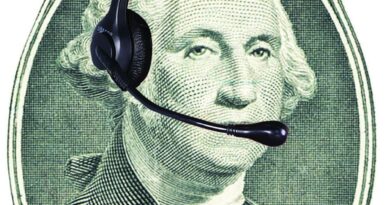Senior nursing facility organizations wanted 75% of staff vaccinated by June 30. They’re still far from their goal. – The Philadelphia Inquirer
Half a year after vaccines became available at many nursing homes, more than 40% of employees nationally still have not gotten the shots, according to data posted Thursday by the U.S. Centers for Disease Control and Prevention.
Pennsylvania’s numbers were in line with the national average, while New Jersey has done better.
Employee vaccination rates have been flat over the last month.
In February, two national organizations that represent providers of senior housing and services, including nursing homes, announced that they wanted 75% of the country’s 1.5 million nursing home workers vaccinated against COVID-19 by the end of June. Only 37.5% of nursing home staff chose to be vaccinated during the first round of vaccine clinics, one of the organizations said.
Nursing homes were a top priority for vaccination because their aged, chronically ill residents were especially likely to catch the new virus and die. Experts said that the coronavirus often found its way into nursing homes through workers, who caught it in the communities where they lived.
Staff and residents were among the first offered then-rare vaccines in late 2020 and early 2021. It soon became apparent that workers, who had witnessed months of pandemic-related suffering but were subject to the same political cross-currents as other Americans, would be less likely than residents to get the shots. Administrators also complained that high staff turnover made it hard to maintain vaccination momentum after the initial push.
With that as a backdrop, the organizations — the American Health Care Association and National Center for Assisted Living (AHCA/NCAL) and LeadingAge — announced the vaccination goal, along with efforts to improve education for employees who questioned the value of vaccines.
A University of Pittsburgh Medical Center study found that nursing home residents developed varying degrees of antibodies after receiving COVID-19 vaccines — that’s a good sign — but researchers did not know how much of a response was needed for protection. Older people, who have weakened immune systems, sometimes do not get as much protection from vaccines as younger people.
According to CDC data, 79.1% of nursing home residents were fully vaccinated by the week ending June 27 and an additional 2.9% were partially vaccinated. Eighty-four percent of Pennsylvania nursing home residents and 82.5% of those in New Jersey had been fully or partially vaccinated.
The vaccination rates for staff are much lower. Nationally, 56.1% of workers were fully vaccinated and 2.1% were partially vaccinated by June 27. That’s a slight decrease from the previous week, when more facilities provided data. As of May 23, 55% of staff were vaccinated, so little progress was made in the last month.
In Pennsylvania, 58.5% of employees were vaccinated by June 27, compared with 59.9% the week before. (Staff turnover or a drop in the number of facilities reporting might explain this decline.) In New Jersey, 68.6% of nursing-home staff were vaccinated by June 27.
Several New England states had staff vaccination rates above 70%, while much of the South and Midwest are between 40% and 50%.
The AHCA/NCAL said that 3,000 facilities have met its 75% goal. It expects continued progress and still hopes to achieve the goal overall.
“Vaccination rates among long-term care staff continue to mirror other health care settings and general population rates, especially in certain parts of the country, because there continues to be a large amount of misinformation circulating around these safe and effective vaccines,” David Gifford, chief medical officer of AHCA/NCAL, said in a written statement. “Ongoing vaccine education and outreach is critical in protecting our vulnerable population from COVID-19, and we remain focused on sharing credible information through our #GetVaccinated campaign.”
Asked whether the organization wants mandatory staff vaccination, a spokesperson said: “Each employer and state will make a decision that is best for their circumstances. We’re focused on educational efforts to improve vaccine confidence.”
Lisa Sanders, a spokesperson for LeadingAge, which represents nonprofit senior care providers, said the percentage of staff fully vaccinated in LeadingAge nursing homes, 63.4%, exceeds that of all American adults, 57.4%.
Her organization analyzed information from 6,081 facilities that submitted complete data for the week ending June 20. It found that about 20% of all facilities had staff vaccination rates of 75% or higher, compared with 25% of facilities operated by LeadingAge members.
Katie Smith Sloan, president and CEO of LeadingAge, said nursing homes have been making progress and continue to educate residents, families, and employees.
“Vaccines are the most important development of the pandemic for older adults and the people who care for them, and everyone in health care and aging services has been working around the clock to steadily increase vaccination rates,” she said in a statement. “Every additional vaccine is a success.”





